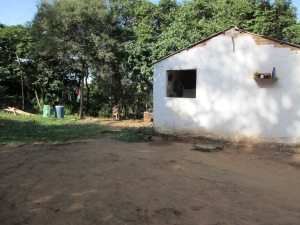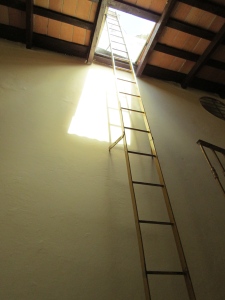I listened to a song about a job interview that went poorly on repeat while I struggled to complete a new workout that I’d written for myself that day. Perhaps the song about the interview resonated with me because I was in my own transition or, perhaps, I just liked the beat. The workout would have been easy for certain versions of my past self. However, recently I’d led a life that didn’t involve intense workouts like this one and, so, the workout was challenging me. “Back to the beginning,” I thought.
I couldn’t ignore the metaphor of my physical fitness and learning medicine because the parallel captured the sentiment I’d been hoping to write about as a reflection of what, exactly, medical school had been like in a broad sense. I’ve had a few months between finishing my medical school classes and starting residency. It’s been a time of celebration and doing things I didn’t have time for during school and won’t have time for during residency. I’ve also taken time to reflect on my medical school experience. “What exactly was the utility of medical school?” I’ve asked myself often during these months of the happy stillness between.
You can guess what medical school was like on a superficial level – it was school. I spent hours studying and hours listening to people instruct me on all kinds of things. I spent more hours practicing skills as varied as suturing cuts shut in the operating room to writing patient medical notes. I attended lectures, engaged in simulated patient interactions, and I worked with real patients and physicians in real hospitals and clinics. I took written exams of various lengths that were proctored by various organizations. Through these actions I learned how the body works and breaks and how we try to make bodies function better with medications and interventions like surgery.
Yet, while learning about the body and how to improve health was the backbone of my medical school learning, it wasn’t the heart of it. The heart of medical school was the exercise of continually starting at the bottom, a place of not knowing much, and climbing to some place of better understanding. Medical school is a lot like the process of doing a hard workout after not working out for a long time and being unable to finish it, then engaging in a few weeks of intent and thoughtful exercise, and finally being able to do the original workout and more.
Medical school taught me that I can learn anything with time and effort. The hardest concepts can be cracked. The first year, I struggled to understand how the body worked. The second year, I expanded my knowledge from how the body worked to how it can go wrong and what we can do about it. Then, years three and four, I learned more about how different specialties in medicine address different diseases and injuries. Each year built on the year prior and then expanded beyond what I knew to things I didn’t yet know. Each time the curriculum expanded I felt like I was starting over. Much like starting in the beginner exercise class and working my way to the advanced class…repeatedly.
I bet you’ve had the experience of riding the rollercoaster of being excellent then falling to subpar and then, through sheer will, climbing to a place of excellence again. And if you have experience doing that in any area of life, then you can imagine what medical school is like. Because it’s just like that. Every month or so you start at the bottom of one area of medicine and climb to the top just to fall again and start the process all over in a different area of medicine.
Medical school is an exercise in being mediocre with a drive to be extraordinary. Each lesson helps move your personal dial from mediocre to better, but there’s a catch. Medicine is founded in science and research and, as such, it’s forever expanding and changing as we (humans) learn more. And so, there is no possible way to ever know everything. To be a physician is to be forever learning while also mastering the knowledge that you explored before. There is no end to medicine, no time when you can’t get better.
Medical school taught me that I can learn anything while I can’t know everything. It taught me not to be intimidated by an obviously hard road, but to take it one step at a time just like I take my plank exercises after a long time not engaging my core. Medical school taught me that experts are built with time and effort. It also taught me that experts remain humble and equally aware of the things they know and the things they don’t know. Medical school taught me that I can do whatever it is I choose to do if I’m willing to put in the effort. The heart of medical school for me was learning that when faced with a challenge to think “yes, I can” instead of “maybe it’ll work out.”




